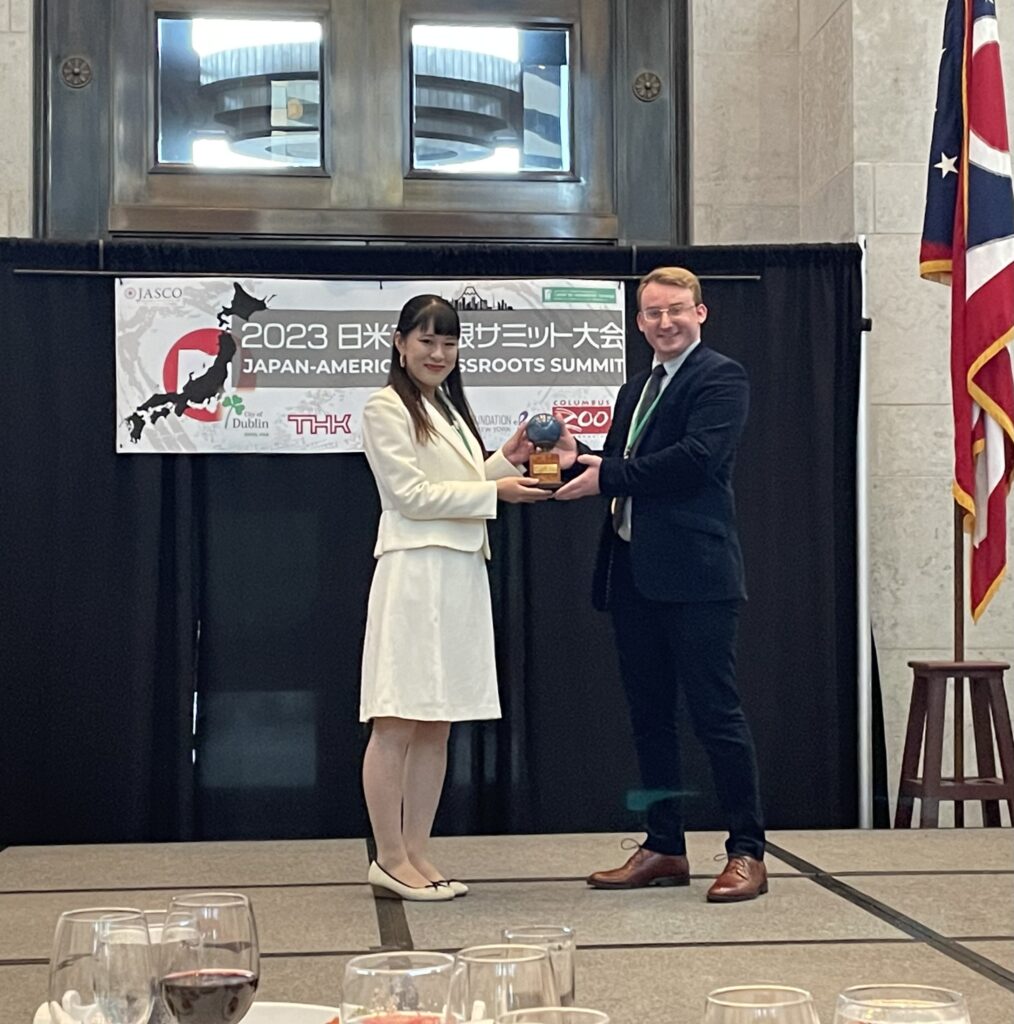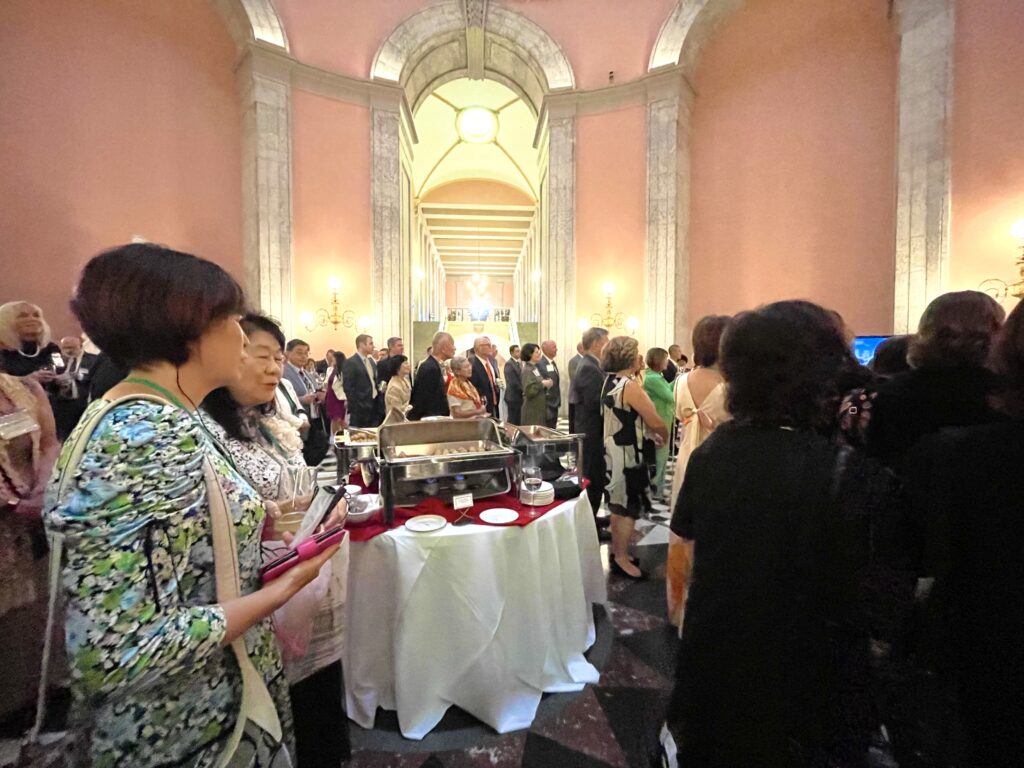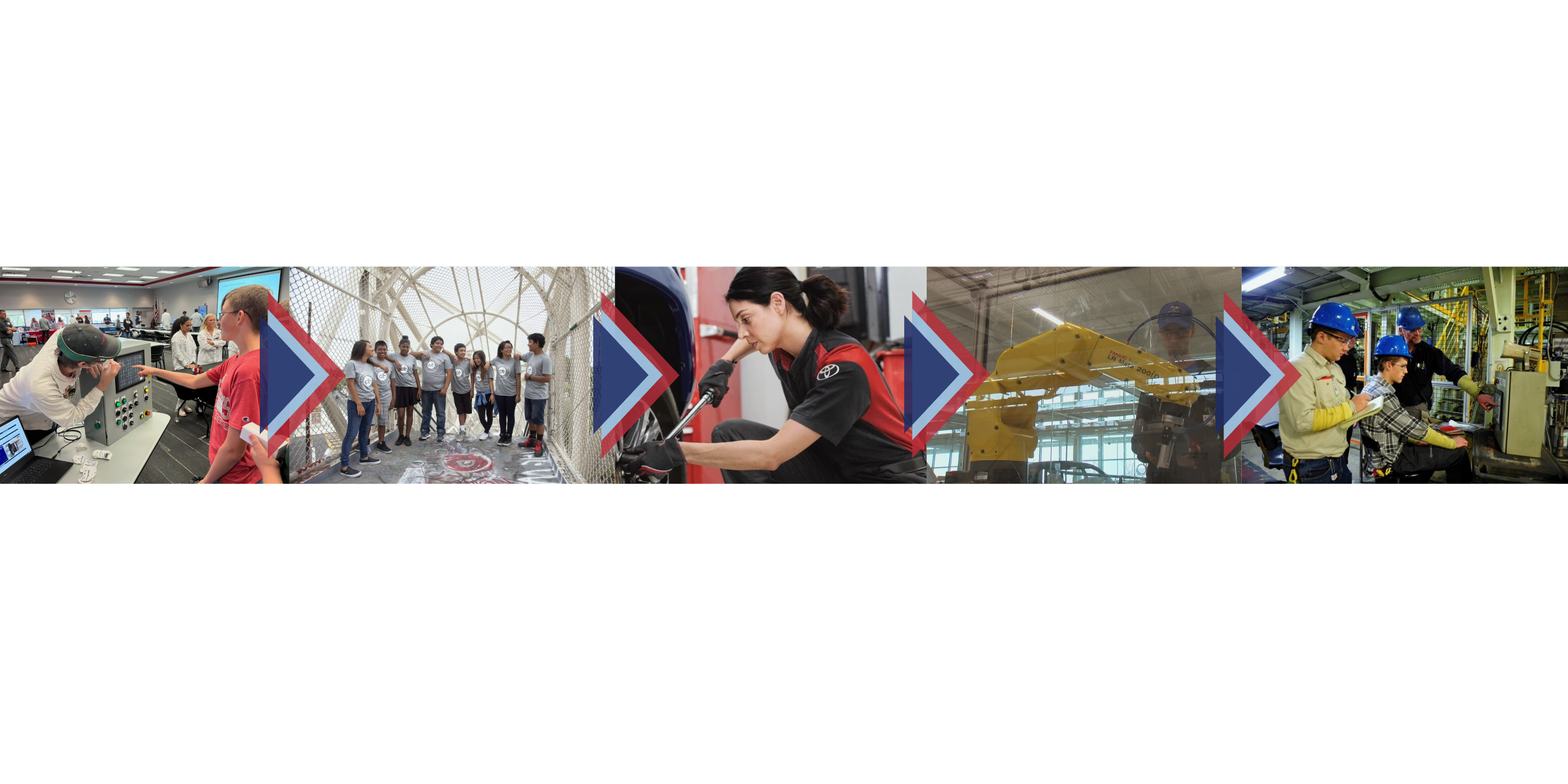By Jenny Kai, Senior Manager of Government and Public Affairs
In many ways, grassroots relationships have always formed the foundation of the U.S.-Japan alliance, which continues to flourish. Recently, JAMA USA had the pleasure of attending the 2023 Japan-America Grassroots Summit, which was hosted by the Japan-America Society of Central Ohio (JASCO) in Columbus, Ohio. The summit celebrates the unlikely friendship between a young Japanese fisherman, Nakahama Manjiro, and Captain William Whitfield, which began in 1841 and eloquently illustrates one of the earliest encounters and friendships between the U.S. and Japan.
Manjiro, who was marooned off the shore of Japan, was rescued by Captain Whitfield, who brought the young man with him to the U.S. As one of the first Japanese individuals to visit and live in the U.S., Manjiro played a critical role in forging the diplomatic relationship between the two countries in an age when relations were just beginning to become established. What ensued later on, was the formal opening of Japan’s borders to vibrant trade with the U.S. and a rapid modernization of Japan under the Meiji Restoration. Poignantly, the summit’s opening night was attended by the 7th-generation descendants of Captain Whitfield and Manjiro – a reminder of the powerful ways in which a genuine connection between individuals can form the foundations of a deep and lasting bilateral relationship.

This moving story inevitably reminded me of the many ways in which JAMA members have been pioneers in their own right. Since 1982, Japanese-brand automakers have called the U.S. home and have been producing American-made vehicles while simultaneously building meaningful relationships with local communities. In fact, these manufacturing investments, which today total $60.4 billion, have, in many cases, acted as catalysts for deepening U.S.-Japan ties on the grassroots level. Nowhere is this more visually evident than the flourishing of local Japanese businesses such as restaurants, food markets, and language schools in communities where JAMA members call home. In turn, this has provided communities nationwide with unique exposure to Japanese culture and the opportunity to form genuine, cross-cultural friendships.
Following visits to JAMA members’ U.S. facilities over the past year and discussions with local government officials and organizations, it is clear that Japanese automotive manufacturing presence in communities across the U.S. have fostered a keener interest in and engagement with Japan. In fact, many sister city relationships were officially established after JAMA members broke ground on manufacturing facilities, including Honda in Marysville, Ohio, Toyota in Georgetown, Kentucky, Nissan in Smyrna Tennessee, and Subaru in Lafayette, Indiana, and many of these connections continue to thrive today. Also, no surprise, many of the Japan America Societies located in these states across the U.S., which actively promote cultural understanding on the grassroots level, were founded right around the same time as Japanese-brand automakers set up shop, including in Kentucky, Indiana, and Mississippi.
Furthermore, in many states, JAMA members’ U.S. investments have acted as catalysts for attracting additional Japanese foreign direct investments by automotive suppliers. This has only reinforced the cultivation of substantive, integrated, local auto production networks and transformed the economic prosperity of entire regions. With the advent of substantive investments in next-generation electrification and battery manufacturing facilities by Japanese-brand automakers, these integrated networks are only deepening, further contributing to the competitiveness of local U.S. economies. What’s more, these investments are directly fueling momentum toward an innovative, electrified future. The full and lasting impact of JAMA members’ U.S. investments is still yet to be determined in this dynamic and ongoing story.
In so many ways, like Manjiro, JAMA member companies have played an important role in propelling the U.S.-Japan relationship forward as they continue to support this legacy. The U.S. and Japan bilateral relationship has come a long way since the chance meeting in 1841 between Manjiro and Captain Whitfield, and certainly since the 1980s when Japanese-brand automakers first began opening their facilities across the country. That said, these enduring grassroots connections form the core of this story, in which JAMA members are proud to have played an integral role. Moreover, this story of deep, bilateral friendship continues to grow and flourish in ever more profound ways!


